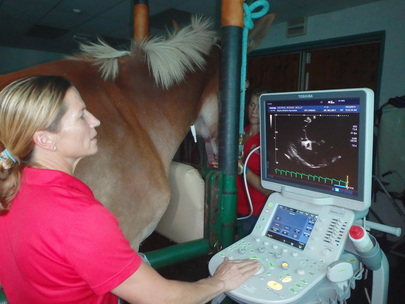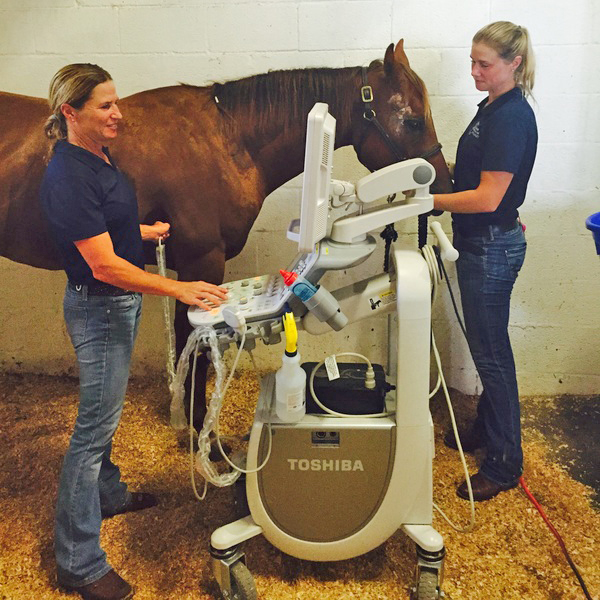Dr. Meg Miller Turpin, DVM, DACVIM
Equine Medicine Specialists of South Florida
You schedule a visit with your veterinarian because your horse just doesn’t feel quite right but you can’t put your finger on it. You think your horse is probably lame because he is tripping frequently, occasionally unable to keep his correct leads, or on certain days he feels weak.
Another scenario: Your horse becomes lame in a front limb and is diagnosed with a tendon injury. You give the horse two months stall rest and rehabilitation as prescribed by your veterinarian. Your horse feels great for the initial return to fitness only to become lame in a hind limb one month later. This time he is diagnosed with a fetlock injury. You follow the rehabilitation schedule and a few months later he is lame again. This time your veterinarian diagnoses an injury to his pelvis.

It can be very disconcerting or shocking to hear your veterinarian tell you that he or she thinks your horse is displaying adverse neurological symptoms, when you know the horse has a swollen leg or is obviously lame. However, it is more common than you may know for a horse to appear, or even be lame, when the primary disease is incoordination or ataxia caused by a neurological disorder.
Neurological simply means referring to the nervous system. When your horse is showing adverse neurological symptoms, it means that there is a problem with the nerve or nerves transmitting the proper signal to the body part it is meant to control. In the context of this article, we are discussing limbs or legs. Therefore, this means that the communication pathways from the spinal cord to the peripheral nerves for that limb is failing to properly relay the information to tell the limb to flex, extend, move forward, move to the side, or even to stop. This can lead to tripping, dragging a limb or toe, weakness or sometimes even sudden collapse.
There are many things that can damage a nerve and cause a neurological disorder. A few examples include infection, inflammation, compression of a nerve or transection of a nerve from trauma. A common condition in young, large breed, rapidly growing horses is called “Wobbler Syndrome” in lay terms. This typically refers to compression of the cervical spinal cord (spinal cord in the neck). This causes gait deficits in either just the hindlimbs, or more in more severe cases, all four limbs. The movements are delayed in conduction or you may see spastic movement of the limbs. Your horse may look like he is drunk or sedated when walking if he is suffering from a severe form of this condition. Or your horse may only occasionally trip or be unable to move up to the next level of athletic ability because it takes more coordination or strength than the horse can handle with his existing nerve damage.
Another common cause for adverse neurological symptoms in the horse is an infection caused by a protozoa called EPM (Equine Protozoal Myeloencephalopathy). This condition can look exactly like the “Wobbler Syndrome”. In order to differentiate between these neurological diseases, a Cerebrospinal Fluid Aspirate (CSF Tap) and radiographs of the neck are often necessary.
You need a veterinarian skilled in neurological exams and one skilled in lameness to distinguish whether or not your horse is suffering from a true orthopedic injury or neurological disease. Not all horses that trip have nerve dysfunction and not all horses that drag their feet are neurological.
Horses suffering from long toes or navicular disease without proper shoeing can also trip. Lazy horses may drag their feet. Or your horse may be incoordinated due to lack of muscle tone (weakness) and this is the reason he is prone to reinjury.
So, don’t fret every time your horse stumbles! Make an appointment with a skilled veterinarian, and don’t be afraid to investigate farther if your horse seems to be repeatedly injuring himself, especially if it is a different leg on many occasions.

